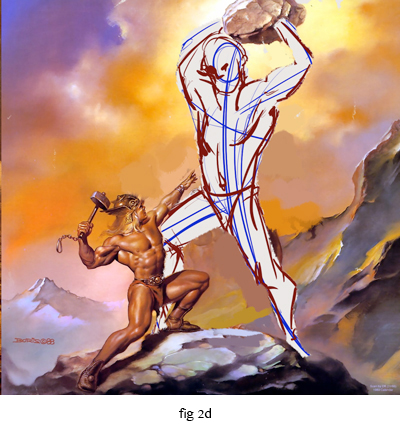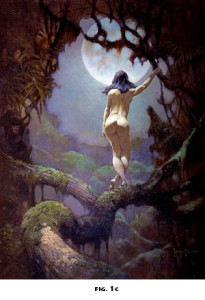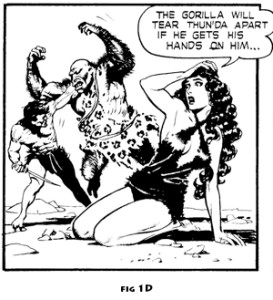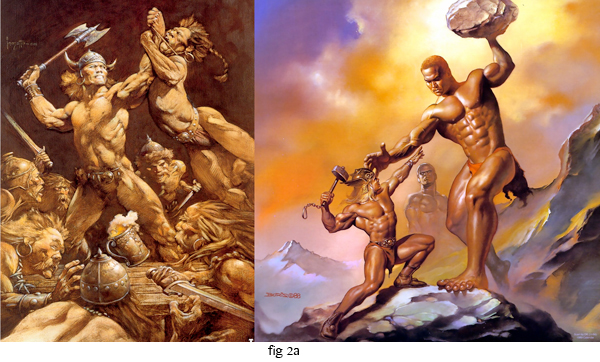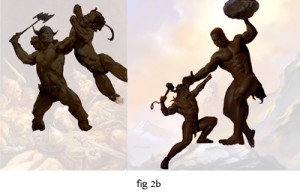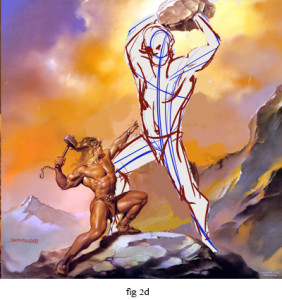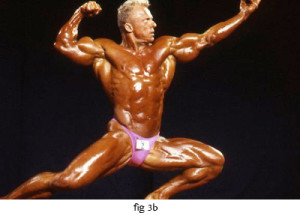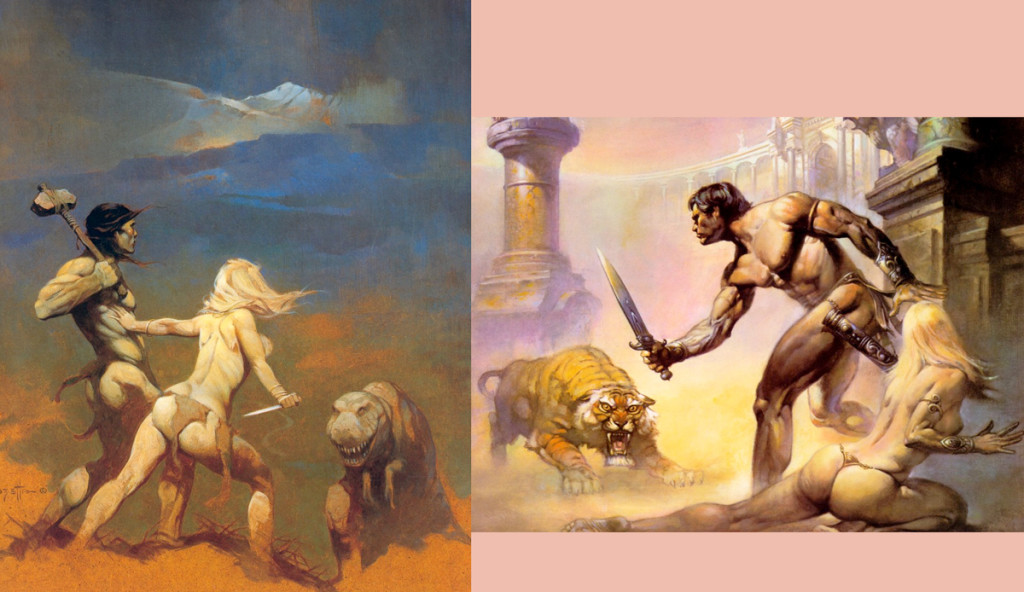Hey! Welcome to ‘How do you Figure’ a bimonthly feature exploring the use of figure drawing in Illustration. All images are copyrights are reserved to their respective holders and are presented here for editorial and educational purposes.
Series 1. I can see your model stand
In sci-fi and fantasy illustration the human figure is often the most important element in a piece, serving a number of different roles. Whether cementing a sense of scale in the minds of the audience, providing an empathetic entry point into the fantastical scene or carrying the entirety of the story on its shoulders. To accomplish this the illustrator must strive for the illusion of life, a term coined in the halls of the disney animation studio to describe the ultimate goal of any character animation. While character animation and figurative illustration are not exactly the same in practice, many of the same underlying principles can be applied. One of the most common weaknesses of fantasy illustrators is to mistake surface refinement for the illusion of life.
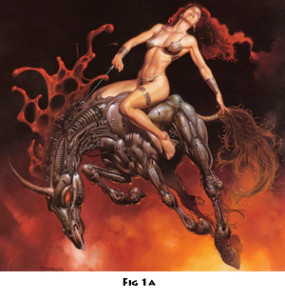 Case in point, Boris Vallejo. Vallejo is an incredibly talented illustrator
Case in point, Boris Vallejo. Vallejo is an incredibly talented illustrator 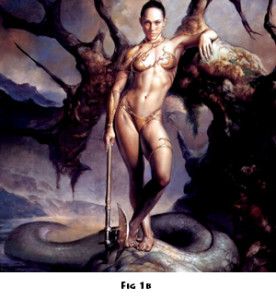 who has been working essentially non stop since he broke into the industry in the 1970’s, and rightfully so. He is truly a master of his medium, pushing paint into realms of the impossible in a way that challenges the imagination of the viewer. His images are most successful when the imaginary elements are primary (fig. 1a) or when the story telling is best served by a figure in repose (fig. 1b)
who has been working essentially non stop since he broke into the industry in the 1970’s, and rightfully so. He is truly a master of his medium, pushing paint into realms of the impossible in a way that challenges the imagination of the viewer. His images are most successful when the imaginary elements are primary (fig. 1a) or when the story telling is best served by a figure in repose (fig. 1b)
His work is weakest when he must convey story through the movement of a figure. As a point of comparison we’ll be looking at the work of Frank Frazetta, no stranger to the figure in repose (fig. 1c). The primary difference being that Frank got his start drawing Thunda comics (fig. 1d), a job that demands the figure be as dynamic as possible while still being easily reproduced in stark black and white.
For the first example we’ve got some muscles clashing with each other (Fig 2a). On the left is Frazetta’s piece and on the right is Vallejo. Both have strong silhouettes (fig 2b) that draw attention to the figure and emphasize the fight as the central focus. But lets look at the line of action (Fig 2c). In the Vallejo piece we have two nearly identical gestures offset only by size. The primary lines of action in the body and arms are nearly parallel with each other, this symmetry stiffens the composition and the figures within it. Imagine if the Giant figure had a contrasting line of action, similar to that of the frazetta piece (Fig 2d)
Further, there are anatomical clues to the model stand that disconnect the figures from the fantasy of the moment. In both pieces the muscle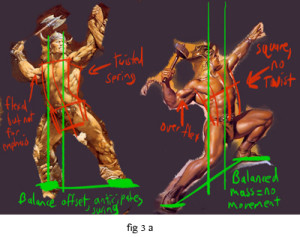 bound men are flexing, ostensible to swing a weapon at a no doubt deserving target. In Frazetta the muscles of the arms and torso are roughly equal in their engagement. The biceps engage but are elongated, the whole character feels like a spring pulled back about to be released. (fig 3a). Vallejo on the other hand is clearly a figure posing to show off his muscles. There is no twist in the spine and the weight is centered between the feet. This is good for maintaining balance when on a model stand for longer poses, but does not convey movement particularly well. The biceps are extremely flexed, in a way only seen in bodybuilders in competition. If one were to swing a warhammer one handed like this, the biceps wouldn’t even engage this way. Its a masterful handling of the figure, but it looks more like he’s trying to win Mr. Universe than that he’s trying to knock out Mr Giant over there. (fig 3b)
bound men are flexing, ostensible to swing a weapon at a no doubt deserving target. In Frazetta the muscles of the arms and torso are roughly equal in their engagement. The biceps engage but are elongated, the whole character feels like a spring pulled back about to be released. (fig 3a). Vallejo on the other hand is clearly a figure posing to show off his muscles. There is no twist in the spine and the weight is centered between the feet. This is good for maintaining balance when on a model stand for longer poses, but does not convey movement particularly well. The biceps are extremely flexed, in a way only seen in bodybuilders in competition. If one were to swing a warhammer one handed like this, the biceps wouldn’t even engage this way. Its a masterful handling of the figure, but it looks more like he’s trying to win Mr. Universe than that he’s trying to knock out Mr Giant over there. (fig 3b)
Vallejo is one of the many spiritual successors to the style that Frazetta first established in his Conan illustrations in the 1960’s. As a result there are multitude of comparable pieces by Vallejo that clearly reference the Frazetta aesthetic, paint handling and subject matter. Take a look at these examples (frazetta on the left, Vallejo on the right) and try to see the model stand. Want to take it a step further? Try doing a paint over of the Vallejo half using the Frazetta gestures as guidance.
